Arkless Electronics
Trade: Amp design and repairs.
Another one! A Series II and under Sugden's own name by now rather than Richard Allan. It had been repaired before in 1992 and had odd pairs of output transistors...
This one was looking a bit poorly... check out those capacitors!
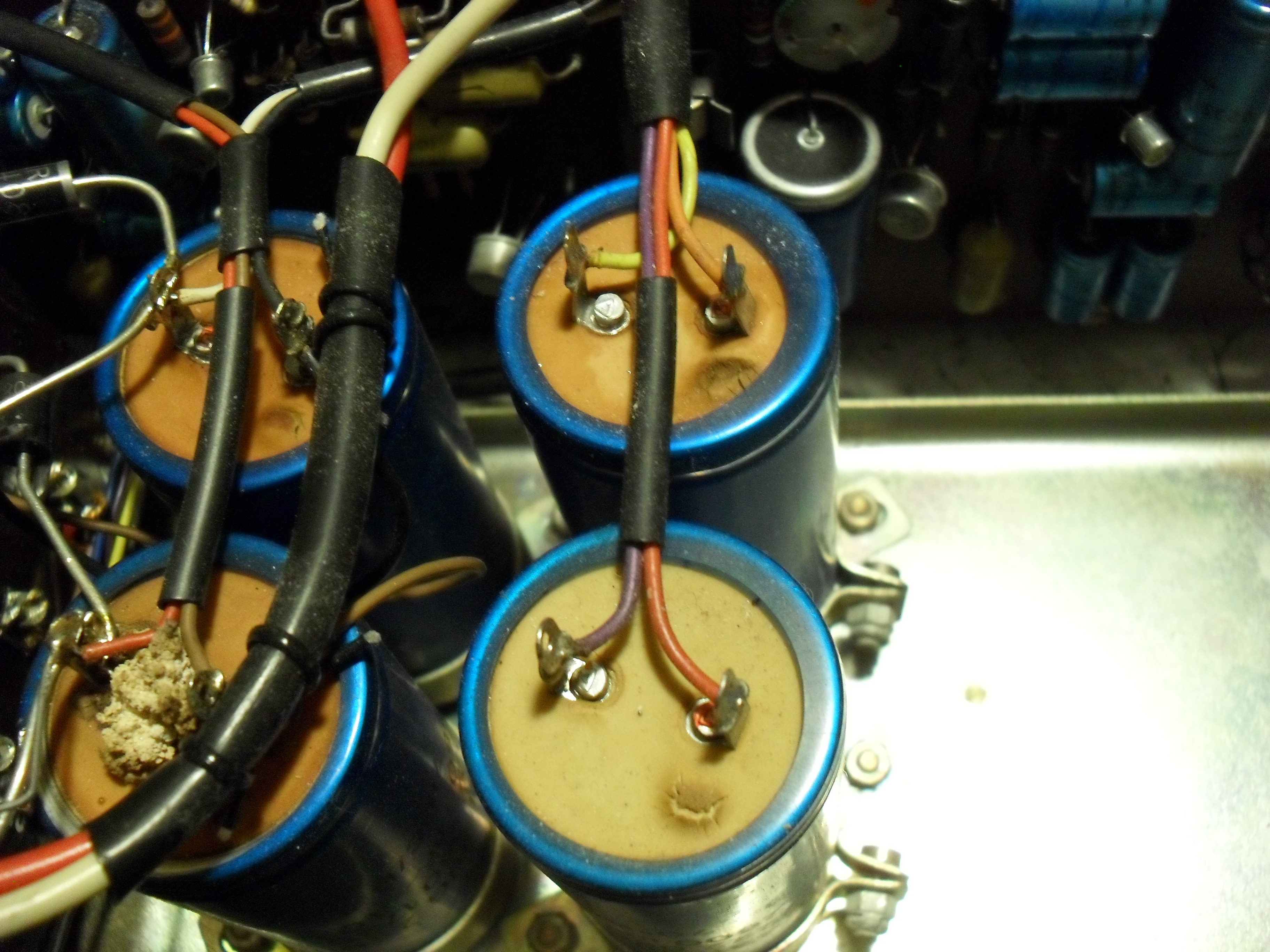
Caps on the power amp boards also looking rather suspect...
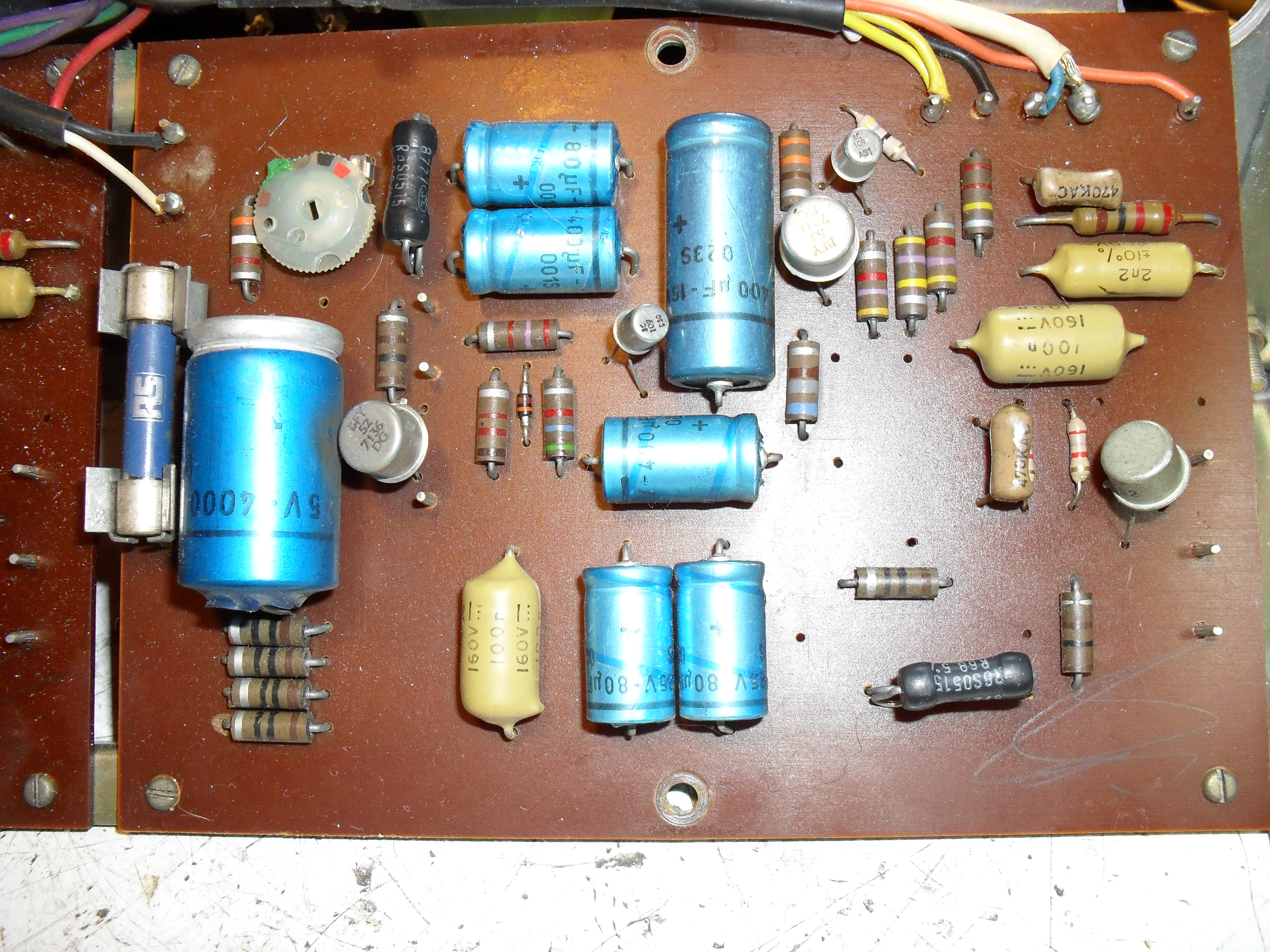
I've found the TO39 outline transistors on this board to be not all they should be also and these will be replaced in the rebuild.
The awful carbon composition resistors had to go as well so this is in effect a new amp after completion of all work.
Here's a completed power amp board. The non electrolytic caps are of types which just don't go wrong.. ever... and so have been retained. The wirewounds don't age and were fine and the 4 10R resistors are in a place where it wouldn't matter if they were out by 20% so were retained. All electrolytics replaced with 105C temperature rated low ESR types and resistors are metal film. The TO39 drivers and pre driver have been replaced by modern improved varieties which I matched.
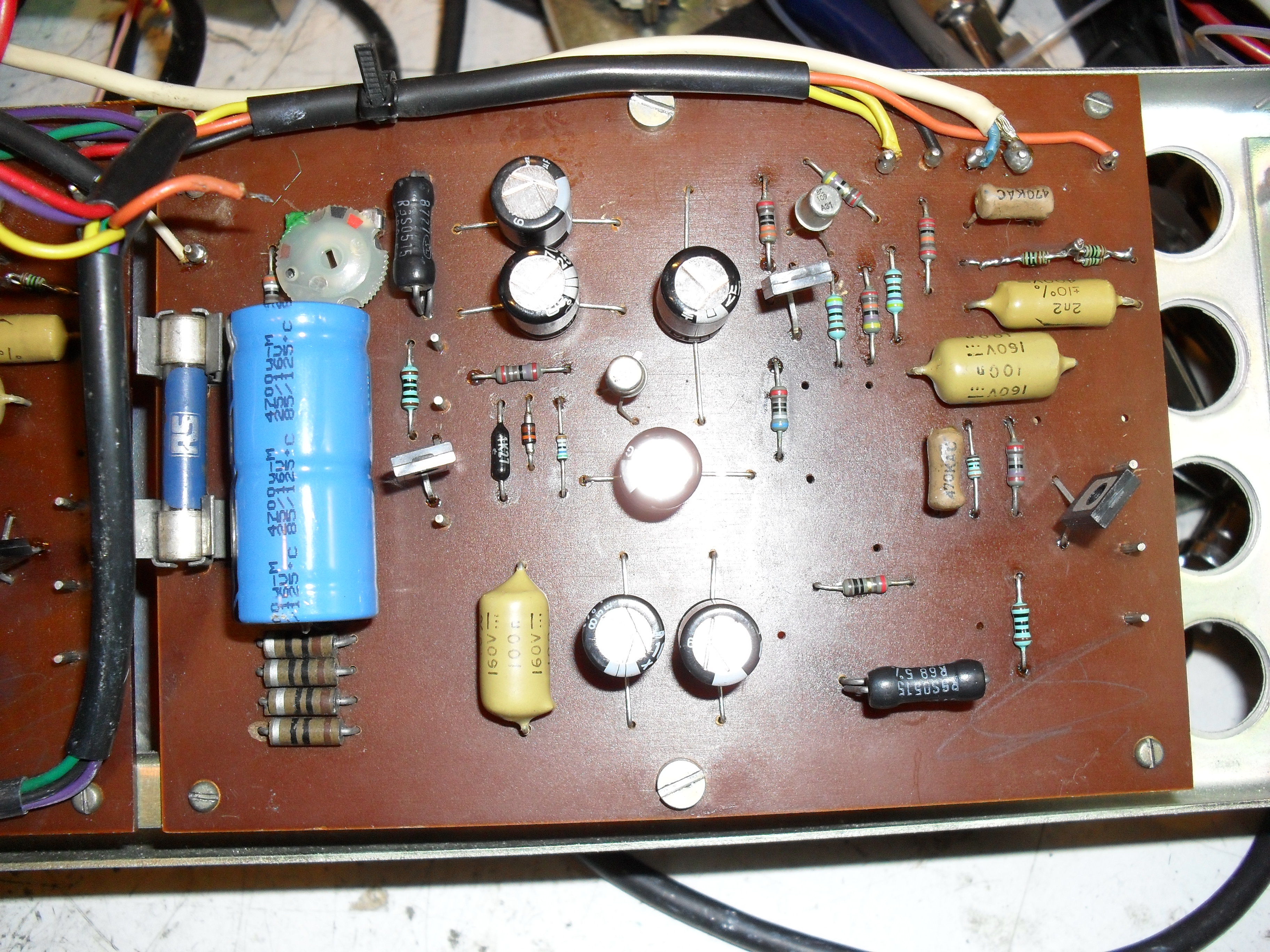
Here's the pre amp board after the same treatment. Removing all the old components without damaging the PCB rather more tricky than fitting the new ones!
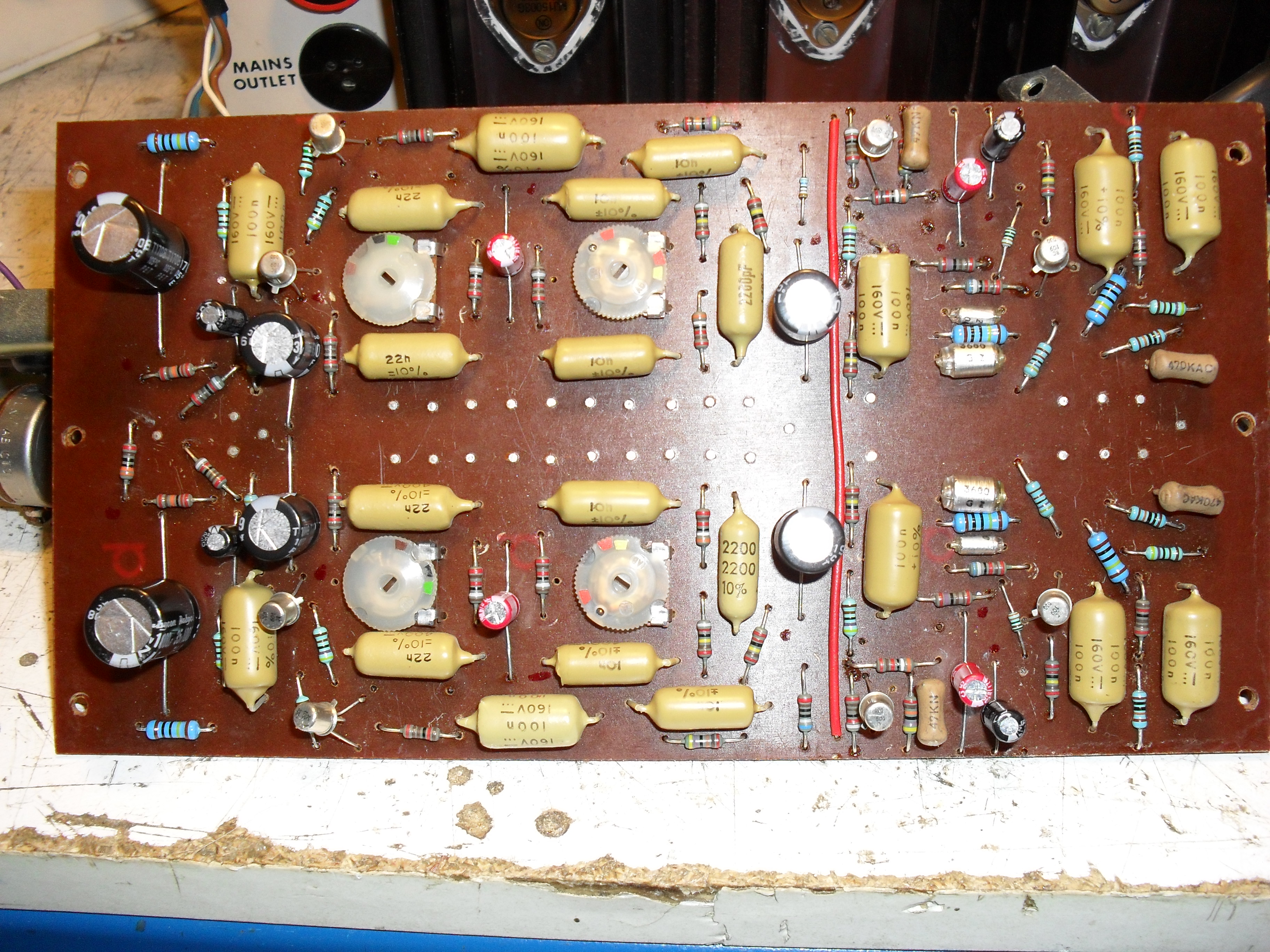
It's getting there... rebuilt boards back in, new smoothing caps and output coupling caps are 3 times the capacitance of the originals at 6800uF and are 105C rated and rectifiers are replaced with fast soft recovery ones. Some of wiring loom replaced as new caps are so much shorter that the original wiring wouldn't reach!
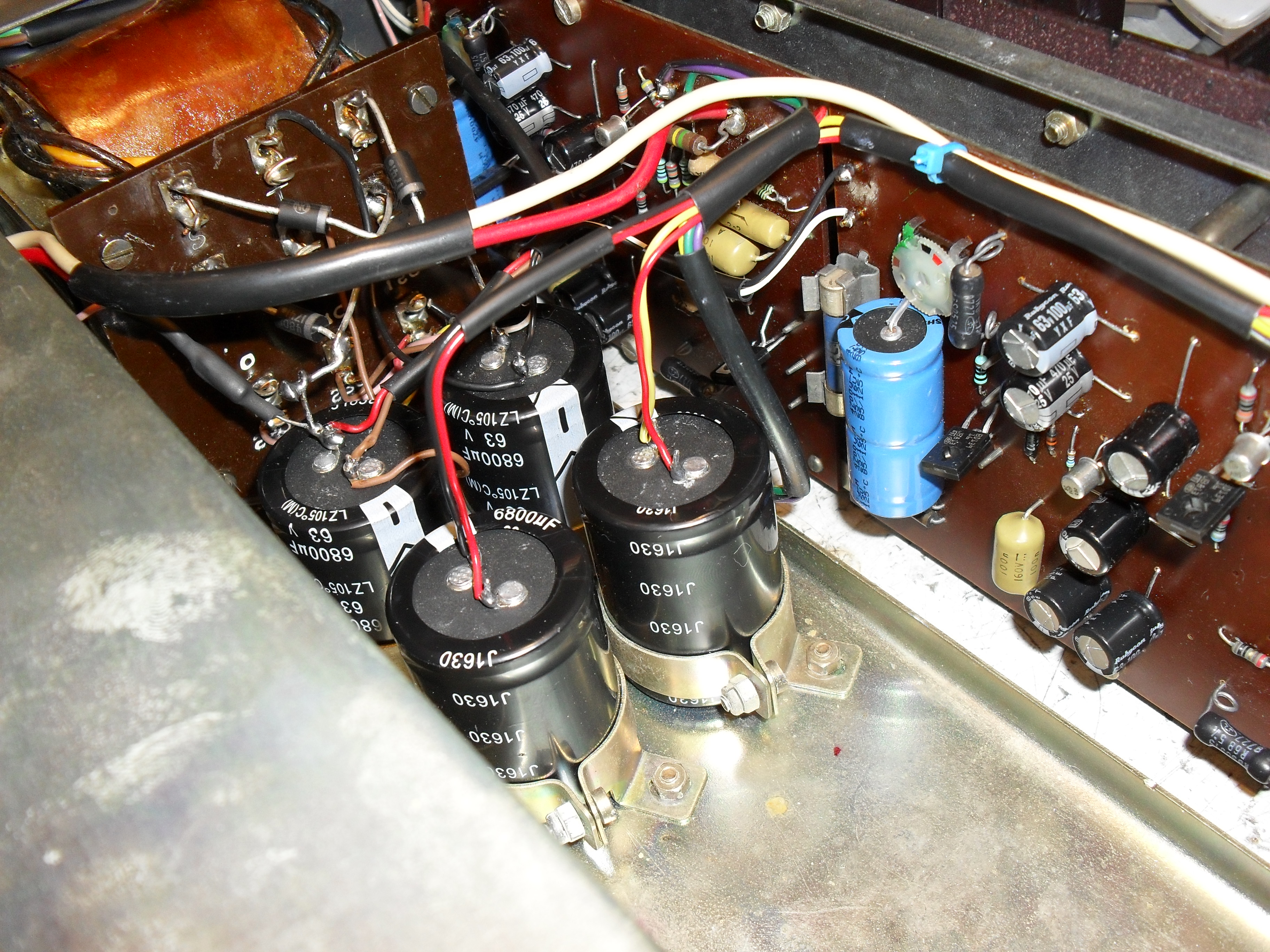
Original output transistors were replaced with better modern ones, new speaker sockets fitted, all controls and sockets treated with contact cleaner, internal adjustments for quiescent current and tone control flat settings made and jobs a gud 'n
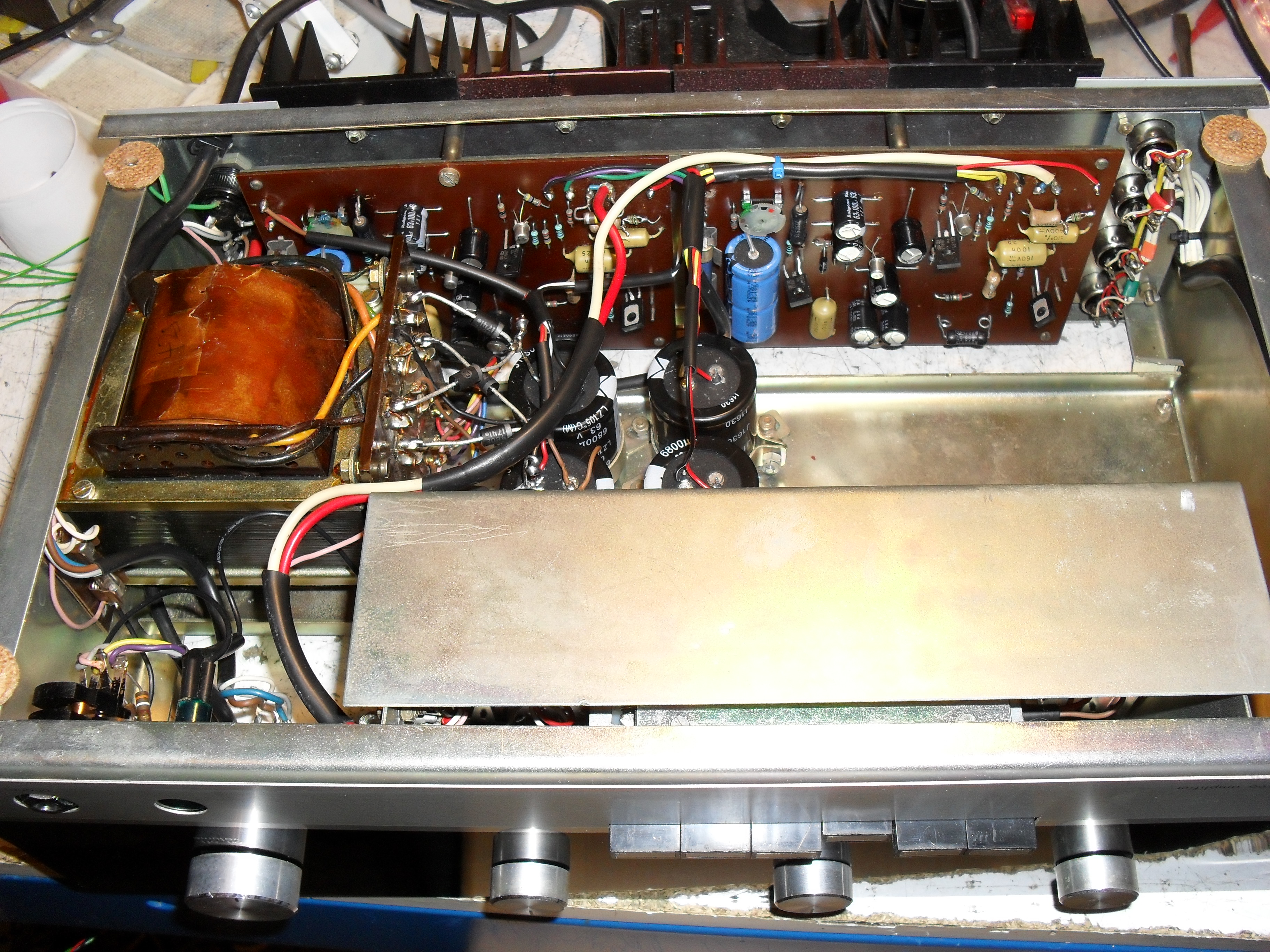
That's not a scratch but a hair that the flash made really stand out!
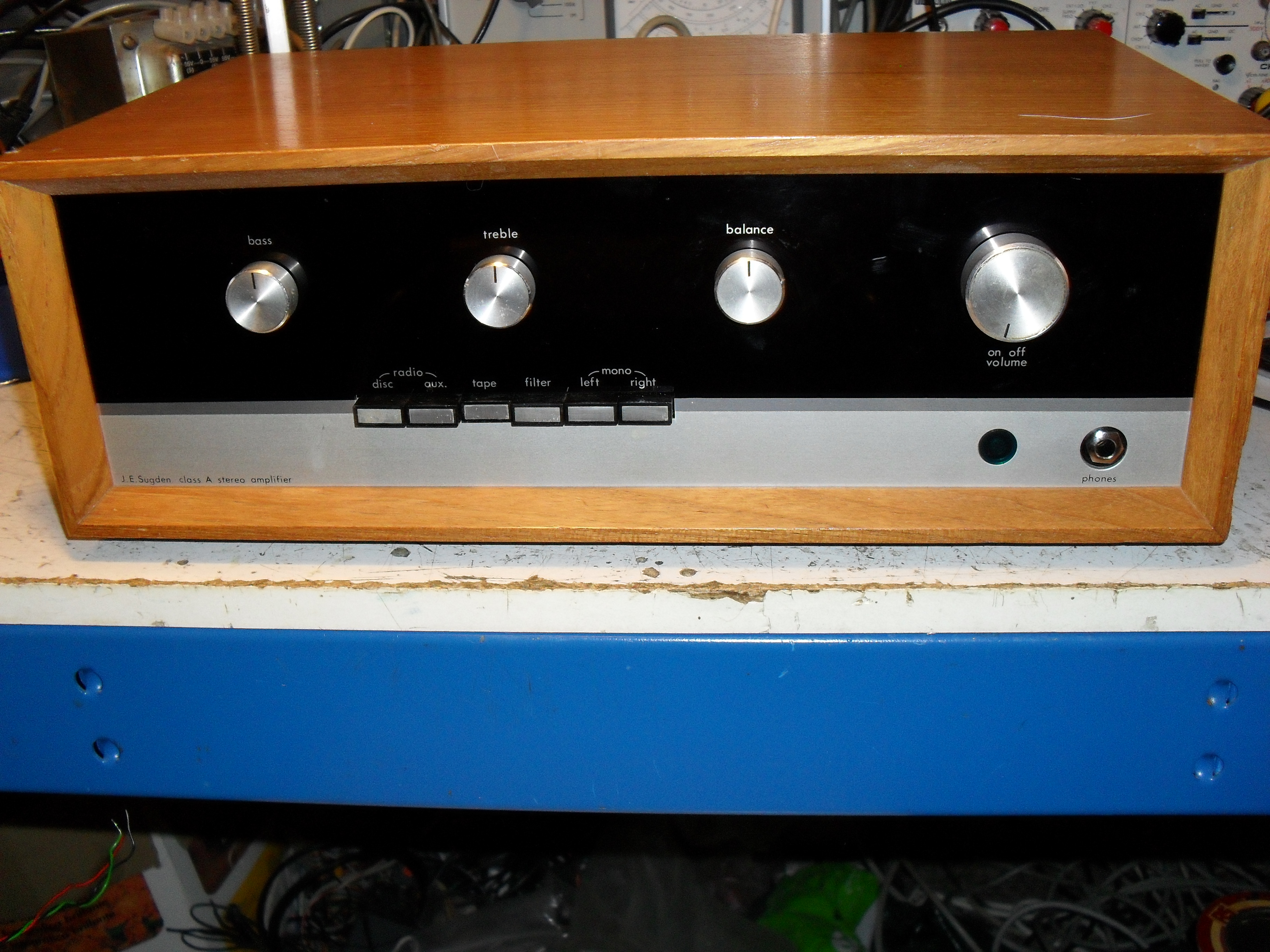
A rebuilt and in effect "new" A21 which should be good for many years now and sounds most valve like
This one was looking a bit poorly... check out those capacitors!

Caps on the power amp boards also looking rather suspect...

I've found the TO39 outline transistors on this board to be not all they should be also and these will be replaced in the rebuild.
The awful carbon composition resistors had to go as well so this is in effect a new amp after completion of all work.
Here's a completed power amp board. The non electrolytic caps are of types which just don't go wrong.. ever... and so have been retained. The wirewounds don't age and were fine and the 4 10R resistors are in a place where it wouldn't matter if they were out by 20% so were retained. All electrolytics replaced with 105C temperature rated low ESR types and resistors are metal film. The TO39 drivers and pre driver have been replaced by modern improved varieties which I matched.

Here's the pre amp board after the same treatment. Removing all the old components without damaging the PCB rather more tricky than fitting the new ones!

It's getting there... rebuilt boards back in, new smoothing caps and output coupling caps are 3 times the capacitance of the originals at 6800uF and are 105C rated and rectifiers are replaced with fast soft recovery ones. Some of wiring loom replaced as new caps are so much shorter that the original wiring wouldn't reach!

Original output transistors were replaced with better modern ones, new speaker sockets fitted, all controls and sockets treated with contact cleaner, internal adjustments for quiescent current and tone control flat settings made and jobs a gud 'n

That's not a scratch but a hair that the flash made really stand out!

A rebuilt and in effect "new" A21 which should be good for many years now and sounds most valve like
Last edited:

